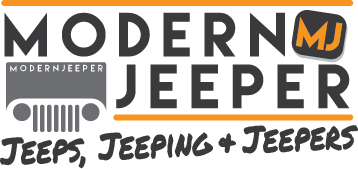

Redundancy Makes Sense Off-Road
Lifestyle December 20, 2021 Tom Severin

Anyone old enough to remember the Apollo space program may recall hearing the term redundancy. Back then, NASA was referring to extra electronics or other systems in the space capsule and lunar module.
Today’s commercial aircraft also employ a certain amount of redundancy.
In either case, the principle is the same: Should the main system fail, the crew could turn to backup technology to ensure a successful mission or flight.
Four-wheelers may never leave the ground (at least not intentionally), but they can face glitches and breakdowns. Redundancy in gear and planning can help ensure most any problem is resolved quickly.

What is redundancy in four-wheeling?
A primary component entails looking ahead: trying to foresee what could happen and account for it. It’s not just about duplicating gear or equipment. You also want backup plans and contingencies.

As for gear, redundancy can mean duplication, as well as packing items that offer similar functionality but perhaps not as convenient (e.g. a can opener and a military P38). Additional redundancy is in the form of workarounds (e.g. use a church-key style can opener or a sharp knife). That’s where the real power comes in. The extra equipment offers its primary function, but can be used to replace something that fails. You’re getting two (or more) useful functions from one piece of equipment.
The point is if something happens, you can continue the trip. And generally without too much discomfort.
Redundancy in equipment
Tires: Tires are the primary cause of issues while four-wheeling. The main backup, of course, is the spare tire. A functional backup would be a tire plug kit. In fact, I always recommend trying to repair a tire first. Save the spare tire for extreme cases.
Valuable and compact, a tire plug kit belongs in every four-wheeling vehicle.
Gear: This list can be long, so I’ll focus on a few items to get you thinking about this concept. Oftentimes gear can be used beyond its intended function.

A good example is the handle on a Hi-Lift jack. You can slide it under a breaker bar for more leverage. I once used a Hi-Lift handle to reinforce a bent tie rod.
Need an adhesive? J-B Weld, a cold epoxy, handles many tasks. But even duct tape and electrical tape can get you out of many problems.
For tying down gear and boxes, straps, ropes and bungee cords are nearly interchangeable. If you pack only one of these, consider adding another for a layer of redundancy and peace of mind.
Being able to start a fire is critical. In addition to cooking food and offering a soothing ambiance, a fire could save you if you’re lost.
Many people carry a butane lighter. A good alternative is matches in a waterproof box. You can also start a fire with AA batteries and steel wool. A third back up is flint and steel. A good example is a product called Light My Fire (https://lightmyfire.com).


As for kindling, a good backup are “fire balls.” Those are cotton balls swabbed in petroleum jelly. Great for getting a fire going.
Communication: The ability to communicate outside the campsite or trail is crucial. Cell phones, being so common, are the go-to method of communicating. Problem is, cell coverage can be spotty or nonexistent while off road.
Good forms of backup communication include ham radio and satellite phones.
Navigation: A GPS receiver is handy, but pack a map or other written format as well. The GPS device could get broken or otherwise fail. Printed information will always be available, unless you spill coffee on it. Go a step further with all your information and instruction manuals by storing a pdf on a digital device you carry with you – laptop, notebook, thumb drive, etc.

Redundancy in planning
Have a plan B.
Often thought of as contingencies, redundancies in planning allow you to react to unforeseen issues.
Let’s say you encounter a washed-out trail or road. If you had selected an alternative in advance, you could try that path now. Otherwise, your trip could be in jeopardy.
Similarly, have an alternate campground in mind should the one you’re planning to stay at is full.
It’s also good to know which gas station(s) and hospital will be close while on the trail. Record that information and share with others in your group. Bear in mind that the closest hospital (or clinic) and gas station can change during a long trip.
Trail Redundancy exists at home as well
This can take many forms. It just depends on what you’d like to account for.
Take tires, for example. I really can’t afford to deal with tire replacement delays. Therefore, I own a sixth spare tire for my main vehicle. Yes, that’s an additional tire beyond the one on the vehicle.
If I’m forced to use the main spare while off-road, I can slap on the replacement tire immediately upon returning home. I love the expediency the additional tire offers. I’m not subject to supply chain delays before my next trip.
As you see, incorporating redundancy in your vehicle and life offers many advantages. In addition to quickly resolving a problem, the extra gear or part provides an added measure of convenience and peace of mind.
—————
Hard to believe, but this year is almost over. The holidays are near, with all the hustle and bustle they bring. And despite the pandemic upon us, it is still possible to step aside and enjoy quality time with friends and family members.
All of us at Badlands Off-Road Adventures, Inc. wish you and yours a very happy holiday season and successful new year.





![MJ Destinations: 3 Days in The Mojave National Preserve – Day Three [BONUS MAPS]](https://i0.wp.com/modernjeeper.com/wp-content/uploads/2024/02/Mojave-Day3-48-scaled.jpg?resize=70%2C70&ssl=1)






